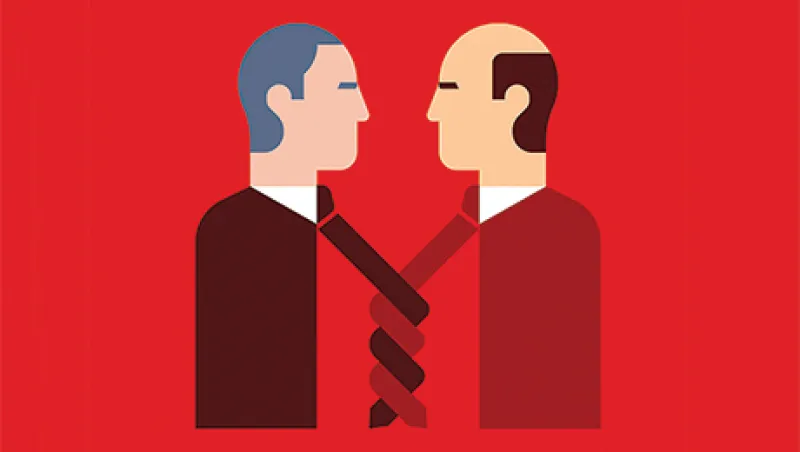As competition from passive-fund providers has eaten away at active managers’ margins, executives have been eyeing mergers.
Standard Life and Aberdeen Asset Management, Henderson Global Investors and Janus Capital, Liontrust and Alliance Trust, Man Group and Aalto Invest — the list goes on. “Many active managers view M&A as a strategy to address the passive trend,” a 2016 report from ratings agency Moody’s Investors Service noted.
They also need to maintain a unique selling point to clients. This has produced a related but secondary trend of boutique bolt-on acquisitions in the hope of amassing greater inflows. Examples here include Schroders and private equity firm Adveq, Unigestion and Swiss small- and midcap specialist Akina, and Citadel France’s acquisition of Trillium, a Geneva-based wealth manager.
For all these completed marriages, history is littered with deals that didn’t go according to plan. So what can the current crop of executives learn from the pitfalls of the past?
At the turn of the millennium, Credit Suisse First Boston snapped up U.S. investment bank Donaldson, Lufkin & Jenrette. DLJ was an aggressive Wall Street player with a reputation for calculated risk taking, whereas CSFB was a patient, conservative operator with a cautious appetite for risk. “They completely miscalculated the cultural differences between the two firms,” says Kern Alexander, a fellow at Cambridge University’s Judge Business School who has researched the merger. “The ways they dealt with customers and regulators were completely different. It is now viewed retroactively as having been a failed merger.” Credit Suisse did not offer a comment.
The CSFB-DLJ deal is not unique. The Merrill Lynch Investment Managers acquisition of Mercury Asset Management in 1997 spurred mass outflows in the months that followed as account management teams failed to overcome client concerns about performance. Both entities would be swept up by BlackRock in a much more successful buyout in 2006.
Stephen Jones, a transaction services partner at consulting firm PwC, explains that culture has historically been an underappreciated factor, one that can scupper the success of any deal. “Today it is definitely something that we talk to clients about in the asset management sector. They need to define their own culture and be clear about that.” No surprise, then, that companies concerned about risks arising from a culture clash are opting for slower integrations, according to Jones.
The merging of Columbia Management with Threadneedle Investments by U.S. conglomerate Ameriprise Financial is a prime example. Threadneedle Investments eventually rebranded as Columbia Threadneedle, but doing so took years. Parent company Ameriprise had acquired Threadneedle in 2003 and Columbia in 2009, yet the new name and business integration were not finished until 2015.
Mark Burgess, chief investment officer (EMEA) of Columbia Threadneedle, says cultural integration takes time and that success is dependent on having a “values-led culture. Having gone through a culture-change program, we have driven these values throughout the wider organization. Now they are the same for Columbia Threadneedle North America as they are here in EMEA: client focus, integrity, excellence, and respect.”
After culture, technology is the second banana peel to have claimed many a merger victim. Information technology systems integration was once an afterthought. That changed 15 to 20 years ago, according to consultants interviewed for this article. When IT integration due diligence is overlooked, the fallout can be tremendous, as evidenced by a major British deal in the mid-’80s.
In 1986, UBS acquired U.K. fund firm Philips & Drew and moved it into new premises at the City of London Broadgate development. But chaos was just around the corner. A year after the acquisition, the firm lost millions when its settlement system failed during a busy order period. The business then lost a further £48 million ($63 million) in the stock market crash, forcing UBS to infuse £115 million ($150 million). Philips & Drew remained unprofitable until 1992.
PwC’s Jones says that as with culture, executives are now much more sympathetic to the issues that IT systems can pose for M&A, and the phenomenal costs involved in fixing them.
“Previously, people just went ahead in a slightly gung ho way,” he explains. “The risk of data failure or limiting access to information or accounts is so critical and brand-destroying that you can’t take a punt on this anymore.”







